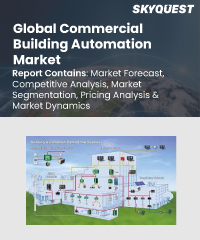
Product ID: SQMIG20C2062

Report ID:
SQMIG20C2062 |
Region:
Global |
Published Date: February, 2024
Pages:
157
|
Tables:
89 |
Figures:
76
A wide and varied array of companies offering a wide range of products and services makes up the competitive landscape of the global commercial building automation market. In order to meet the evolving needs of the commercial real estate sector, these firms are continuously working to innovate and provide comprehensive solutions. They are captured in intense competition in areas such as lighting controls, smart HVAC systems, energy management solutions, and security and access control. To expand market reach and enhance the range of product offerings, many players in the market employ partnerships and collaborations as common strategies.
Additionally, in order to provide insightful information that can be implemented for building management, companies are targeting the development of user-friendly interfaces and leveraging data analytics. This fierce competition drives innovation and advancements in building automation technologies, which benefits businesses seeking to optimize their commercial spaces and offer differentiated solutions to healthcare providers and patients in the long run.
Top Player’s Company Profiles
Our industry expert will work with you to provide you with customized data in a short amount of time.
REQUEST FREE CUSTOMIZATIONWant to customize this report? This report can be personalized according to your needs. Our analysts and industry experts will work directly with you to understand your requirements and provide you with customized data in a short amount of time. We offer $1000 worth of FREE customization at the time of purchase.

Product ID: SQMIG20C2062